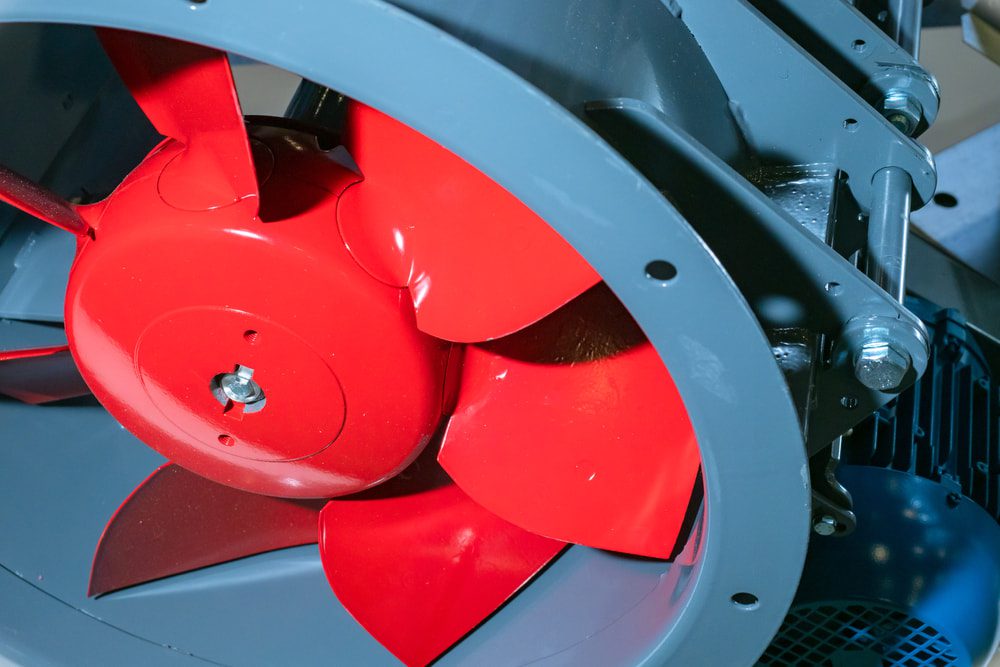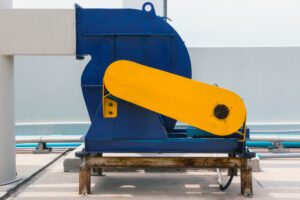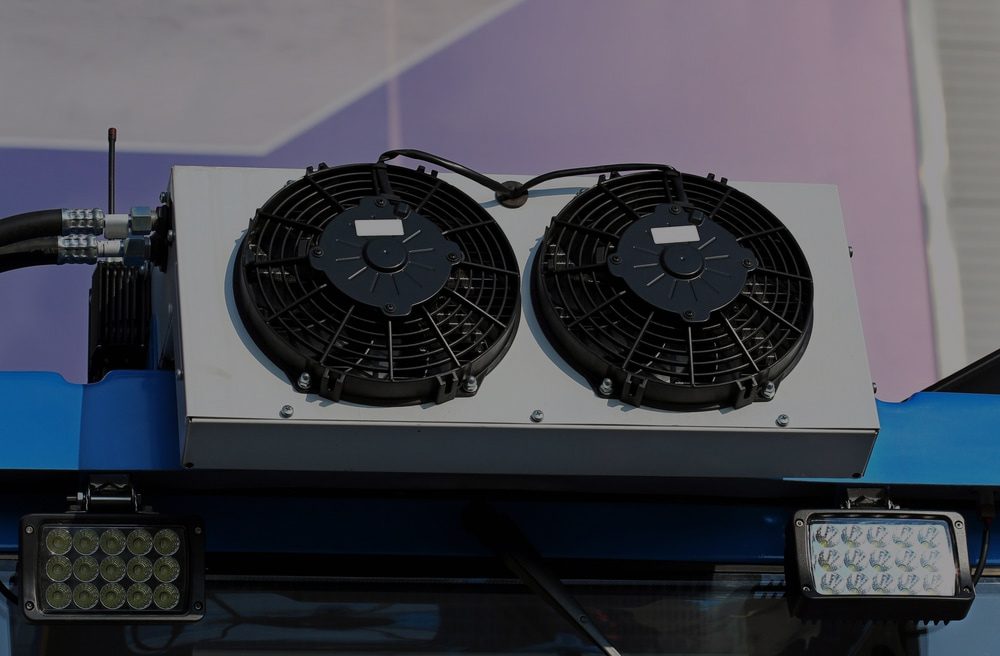Axial fans and centrifugal fans have existed on the market since the 19th century for a reason. Each fan system performs a task that works better in specific environments. One is not necessarily better than the other. The differences between axial fans and centrifugal fans are simply performance related. They should be installed for their intended purpose to perform at optimum levels. This decision allows the fans to accomplish their design appeal so that companies meet industry standards. Keeping employees and the environment safe should remain at the forefront of choosing the proper cooling or ventilation fan system.
Heavy Duty Axial Fans

Propeller or axial fans are popular for conducting large masses of air from one area to another. A motor drives the propelling blades into a rotating action. This action creates airflow that runs parallel to the axial point of the motor.
Kinetic energy created by the suction of the rotating blades helps reduce the pressure on the blades, increases efficacy, and assists the motor. In this pressure exchange, the negative and excess pressure balance remains equal.
Applying an additional diffuser helps offset the balance and increases extra pressure as needed. Axial fans (tube axial or axial vane fans) work best with ducts.
Pros of Axial Fans
- Inexpensive ventilation, cooling, and exhaust solution
- Easy to install, AC and DC adaptable
- Low pressure and high volume fans
- Versatile cooling application (offices, residential, equipment)
- Manufactured from different materials like aluminum or stainless steel
- Various sizes and economical performance
- HVAC, condenser, and heat exchange compatible
Cons of Axial Fans
- Unable to build pressure
- Noise pollution in some areas of application
Axial fans are suitable for warehouse exhaust and ventilation systems. They work well in paint and welding booths, auto shops, textile, paper, steel mills, engine and equipment departments, spot cooling, and maximizing air ventilation.
Companies like Intel® and Cisco Systems® are regenerating the vending machine market and revamping axial fan uses.
Applications for Centrifugal Fans
Centrifugal fans have one distinct advantage over axial fans. They generate high-pressure flow and are also called blowers. The engineering behind centrifugal fans takes advantage of the circular hub on which the fan blades are mounted.
This engineering decision allows air suction inside the housing, creates and builds pressure, and releases that air at a 90° angle outward in any suitable direction. This application of higher pressure drives the use of centrifugal fans when a singular fan unit needs to maneuver air through greater but defined distances like in ducts and tubes.
Manufactured and engineered to house the blades in a casing, it makes them more durable and protected from incoming objects like rocks or other mining debris that might damage the blades. Centrifugal fans are a great power partner for air conditioning units in large or small-scale operations.
Electronic devices like laptops also rely on centrifugal fans to extract heat and expel it at 90° from the source. This feature makes centrifugal fans very versatile in many applications.
Centrifugal fans are a vital component in creating safer mining environments. Suitable for these high-efficiency tasks, centrifugal fans operate on consistent pressure streams. However, they can’t move larger masses of air like axial fans.
Pros of Centrifugal Fans
- Conduct dedicated high-pressure airflow
- Enclosed impellers for increased longevity and safety
- Forward and backward curved impellers
- Ability to create suction and or blowing effect
- Directional venting
- AC and DC compatible
- Variable sizes
Cons of Centrifugal Fans

- Emission of noise volume (louder than axial)
- Higher power consumption
- Expensive
- Heavier units to install
Centrifugal fan applications include underground coal mines, metal processing facilities, food and meal production, recycling depots, woodworking industries, chemical and coal-fired plants, and power generators and process markets.
Choosing the right fan system for any project is vital in the design phase. Both fans work well if used in the right environment and industrial application.
Noise Levels Generated by Fans
Axial and centrifugal fans create electromagnetic interference (EMI) and are classified as distinct radiated EMI (the fan) or conducted EMI (power). Additional interference is produced by unbalanced magnetic fields (UMF) from the motor’s magnets and stator (stationary) components.
Noise levels are a huge deciding factor addressed during the project’s design phase. A notable aspect is that DC-operated fans generate less EMI than their AC-powered counterparts.
In addition, fans also create operating noise. Noise factors depend on usage, location, volumes of air, type of bearings, and fan size. Using the correct fan type in each application contributes to noise level reductions.
Choosing the best location for the fan and installing air grills and outlet diffusers can impact noise decibels. Cubic feet per minute (CFM) rates are also important considerations and should work in tandem with the type of fan and the air volume they’re designated to move.
Larger volumes of air driven by a larger fan create less noise than a smaller fan tackling the same volumes of air.
Making Your Choice Between Axial and Centrifugal Fans
Understanding the complexities and efficiencies that axial fans and centrifugal fans supply is essential in understanding each fan system’s benefits. Failure to install them correctly can be a costly endeavor.
Contact the experts at Lindberg Process Equipment today to learn more about the right type of fan for your project.





